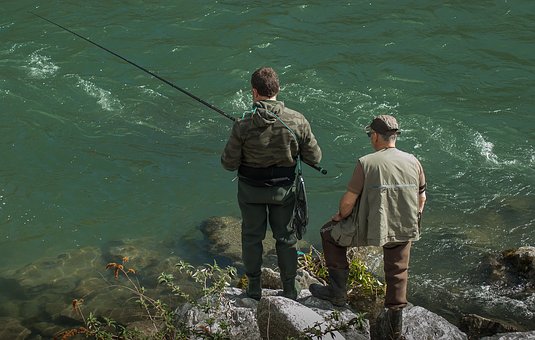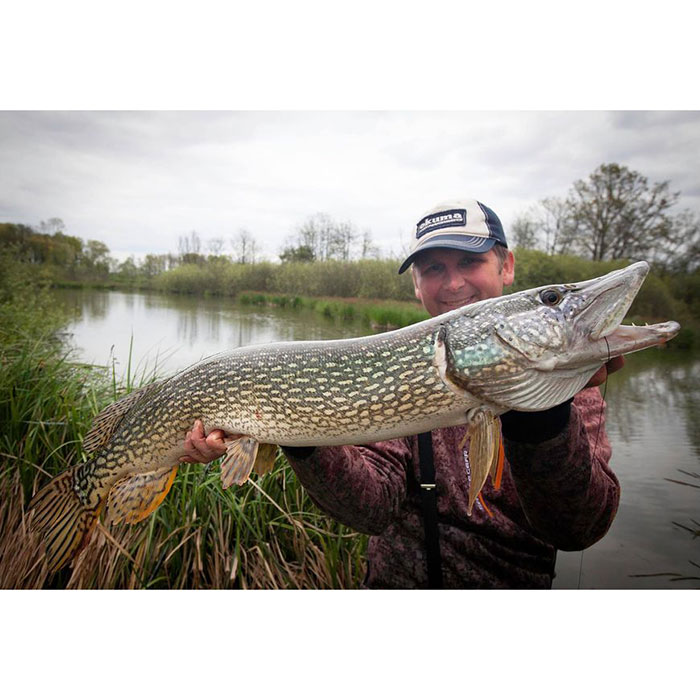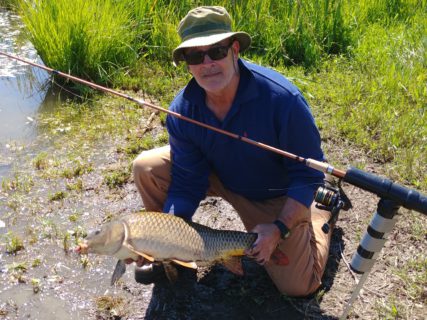Which Fishing Rod-is the best? depends on the species of fish you are targeting, and where you will be fishing. Find out how to choose the best pole for you.
A Question for the Ages
The best fishing rod to use depends entirely on the species of fish you target, and where this fishing is taking place. Another very important factor is the weight of these fish in pounds or kilograms. If your fishing rod is too small for the fish, it will get broken in the struggle, on the other hand, if your fishing rod is too big for a small fish, you won’t be able to feel the bite because the rod will be too stiff.

A fishing rod can be described as any long, flexible, pole used by a fisherman to catch fish.
The Okuma SST-S-902M
For the purpose of this exercise, I will describe my Okuma SST-S-902M steelhead spin fishing rod.
4 inches above the handle, I can read the following data.
SST-S-902M
9’0″ Length M Action
8-17 lbs 3/8 – 1 oz
What does this all mean? … these are the specifications for this fishing rod.
Okuma SST steelhead spin, is the name of this fishing rod. It is described as a steelhead spinning rod. It is a spinning rod, but it can also be used for other species of fish.
9’0′ Length M Action, means that this fishing rod is 9 feet, 0 inches long and a medium action rod. The M for Medium.
8 -17 lbs, means that the recommended tensile line strength for this fishing rod is between 8 lb test and 17 lb test.
3/8 – 1 oz, means that the recommended tackle or lure weight for this fishing rod is between 3/8 of an ounce, and 1 ounce.
Knowing how to read the label on your fishing rod is going to make you a better fisher because you will be using the right tool for the job. You’ll have to have to learn more because fishers take their fishing and tackle very seriously.
How are Fishing Rods Classified?
Fishing Rods, such as the Okuma Family of Fishing Rods, use:
- model number
- application
- foregrip length
- handle style
- line weight
- lure weight
- number of guides
- rear grip length
- rod length
- rod power
- rod taper
- product sections
- weight in ounces
- oversized to describe a fishing rod.
- These designations vary slightly between different manufacturers, but these ones mentioned above, will get you a long way towards making an intelligent choice when purchasing a fishing rod to target your preferred species. Some of these are described in more detail below.
Power
The power value, is also called the rod weight. In my case the rod weight is Medium and is designated with an M. Rod Weight is the more common term used in my neck-of-the-woods. Every fishing rod worth its salt will have this descriptive information.
Rods are classified as ultra-light UL, light L, medium-light ML, medium M, medium-heavy MH, heavy H, ultra-heavy UH, or other such combinations, that may be specific to certain countries and/or companies, but these classifications are quite popular in North America.
Action
The Action of a fishing rod refers to the speed with which your fishing rod returns to its neutral position. The action of a fishing rod can be slow, medium, or fast, or anything in between these, such as medium-fast. Contrary to popular opinion, the action does NOT refer to the bending curve.
Line Weight
Fishing line weight is described in pounds of tensile force required to break the line. Line weight for a fishing rod is the range that the rod is designed to support.
Lure Weight
Lure Weight is the weight of lure or terminal tackle, that the rod is designed to support. It is expressed in ounces or grams.
Number of Pieces
A 1-piece rod, from butt to tip, will have the most natural feel, but 1-piece rods are not very practical for travelling. Since most fishing takes place in different locations, and given that fishermen tend to move a lot, to seek their quarry, rods are broken down into pieces, to facilitate their transport.
2-piece rods are the most common, however, there are rods that measure in the 20 to 30-foot range, and these are usually telescopic in design.
Features of the Okuma Family of Fishing Rods
- technique and species-specific rod actions
- sensitive IM-8 graphite rod blank construction
- E- glass rod blank construction on halibut rods
- durable stainless steel guide frames
- zirconium guide inserts reduce friction from braided lines
- halibut rods use heavy-duty boat guide frames
- custom 1-K woven carbon fibre pipe reel seat on salmon rods
- custom IM-8 graphite pipe reel seat on most spinning rods
- premium fore and rear grips on all models
- halibut rods feature a triangular-shaped fore grip with shrink tubing
- integrated compressed cork butt cap, non-skid surface
- stainless steel hook keeper
- all SST rods are backed by a 1-year limited warranty
Which Fishing Rod is the Best?
Fishers takes their fishing rods very seriously!
 Fish On!
Fish On!
Fish On! … or the sound of your fish spooling line off your reel is a pleasure to the ear. We almost never agree on the best fishing rod or the best fishing reel, but we all agree that fishing is an experience to enjoy, whether you do it on a lake, a river, or on the ocean.
I enjoy fishing stories as much as the next guy, so I would love to hear about your latest catch, and how you struggled to land that hostile creature.
You can Contact Me at this link with your details.
If you have any comments, questions, or suggestions, do not hesitate to drop me a line!

